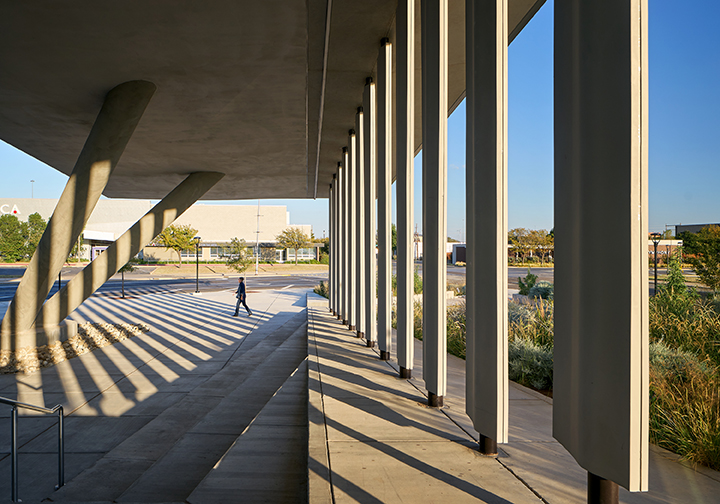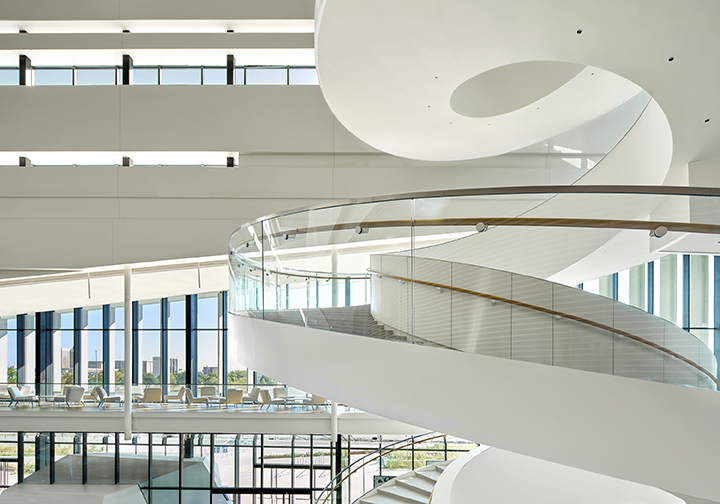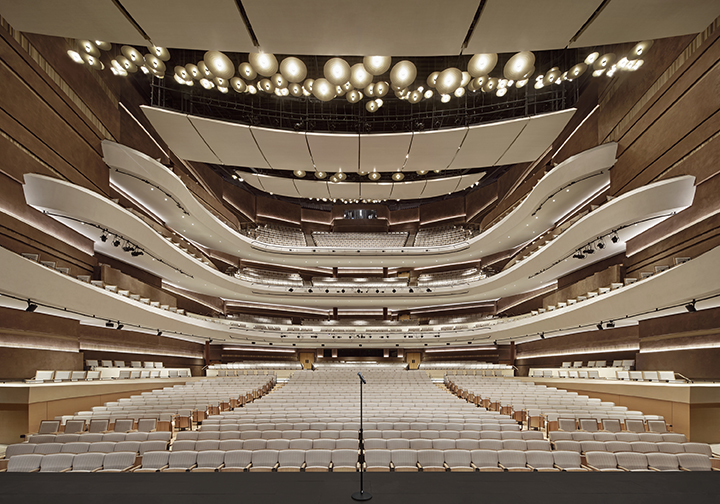Climate Action
The architecture profession must play a role in stabilizing the climate change crisis, lowering greenhouse gas (GHG) emissions in favour of clean power. This is one of the reasons why the OAA has chosen “climate action” as a theme in its strategic plan.
As it did in 2020, the OAA once again required Energy Usage Intensity (EUI) metrics to be included as part of the submissions process for the 2022 Design Excellence Awards program. EUI is the measurement of a building's annual energy consumption relative to its size. The lower the number, the less impact the building has on our climate. You can learn more about the OAA’s Total EUI Calculator online tool, free for both members and the public, by clicking here. Attached is the 2030 Ontario Target Data chart which shows the EUI goals for the 2030 challenge based on the building type.
TEUI of the project: 214 kWh/
m2
Location: Lubbock, Texas
Architect: Diamond and Schmitt Architects Incorporated (Design Architect), Parkhill (Architect of Record), and MWM Architects, Inc. (Associate Architect)
Lubbock, Texas lost its heart after two tornadoes destroyed the downtown core in 1970. Buddy Holly Hall represents a city redefining itself through collaborative design and a community funded commitment to the arts and education. The design is influenced by the landscape of West Texas. Horizontal striations running along the building’s envelope reflect the prismatic rock formations of Texas’ canyons. The building’s colours are inspired by the desert plants, soil, and sky, while its shapes and angles are abstractions of arroyos and other landforms.
 Photo credit: Dror Baldinger, FAIA
Photo credit: Dror Baldinger, FAIA
The design is for a comprehensive performing arts centre and community hub that brings together entertainment, education, culture, and the arts for the people of West Texas. There was no preconceived notion of what this building should be like so extensive community engagement determined the requirements of the space to best serve its diverse occupants—a citizen’s board, the district school board, a ballet school, a restaurateur, musicians, and artists. The program evolved to include a small and large theatre, main lobby, flexible rehearsal and performance spaces, multipurpose rooms, restaurant, and outdoor amphitheatre and gardens.
The building’s façades are innovations in integrated design. Most buildings in this climate are either opaque or have massive air-conditioning loads, as heat gain is overwhelming in summer. The team designed a long overhang, angled fins, and deep-set ribbon windows to act as architectural drapery to shade and filter light without obstructing the vistas surrounding the Hall.

Photo credit: Dror Baldinger, FAIA
Targeting LEED Silver, the building responds to the region’s extreme temperature fluctuations. Its façade design significantly reduced cooling loads. Extensive sun studies determined the best angles for the custom fins to maximize shade and view.
The gardens are all native species, so water usage is minimized. The plantings integrate low-angled ramps, creating universally accessible paths to all entrances. A covered plaza and an east-facing courtyard provide shaded social space providing comfortable conditions for outdoor events.
Back-of-house spaces all receive natural light from the north and west designed to enhance the workspace for performers and staff.
 Photo credit: Dror Baldinger, FAIA
Photo credit: Dror Baldinger, FAIA
Buddy Holly Hall represents a city redefining itself through collaborative design and a community-funded commitment to the arts. It fulfils the citizens’ desire to revitalize the region’s once-energetic cultural scene—through not only the diverse performances and programming it hosts, but also the positive impact it has on the local school district and arts community. The Hall has become a destination where people can experience all of these cultural things: arts, ballet, Broadway, entertainment, opera, symphony—which was previously limited because of the rural location. It becomes part of the greater arts community, and continues to grow with it.